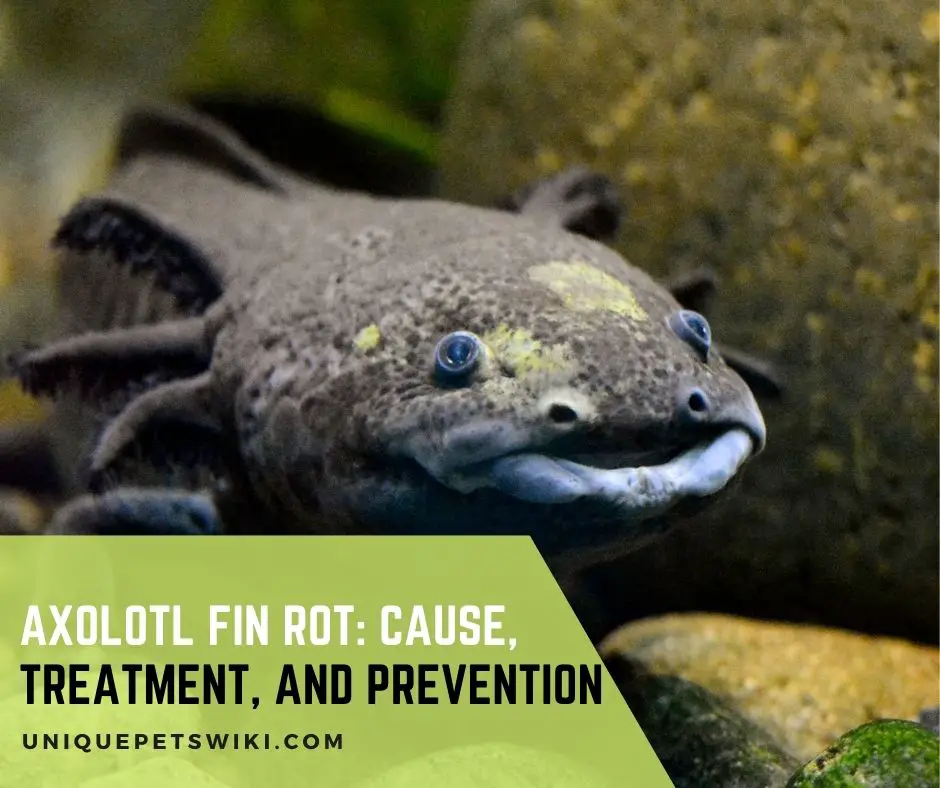Fin rot in axolotls is a bothersome problem for both the axolotl and the owner. So, what are the causes, and how can the problem be treated and prevented?
Axolotl is an extremely sensitive pet that requires specific attention in order to live a long and healthy life. Changes in water parameters and the surrounding environment might result in major health problems.
Fin rot is a physical condition that owners observe when handling or feeding their axolotls. Fin rot is not caused by an injury or a chronic infection. People need to understand the causes of fin rot to take preventative steps.
This article aims to inform readers about the causes of fin rot. Other relevant issues, such as tail rot, will be discussed in the article.
So, read the entire article to learn about axolotl fin rot treatment and prevention measures.
Contents
Axolotl Fin Rot: Cause, Treatment, and Prevention
A fungal infection, fin injury, stress, and poor water parameters can all cause axolotl fin rot. Fungal infections, on the other hand, induce significant fin degeneration.
Axolotl fin rot must be treated as soon as possible, otherwise, the infection will spread to other organs.
Due to the multiplication of bacteria, the infection might spread to internal organs and result in death. Consult a veterinarian as soon as you detect the signs and symptoms of fin rot.
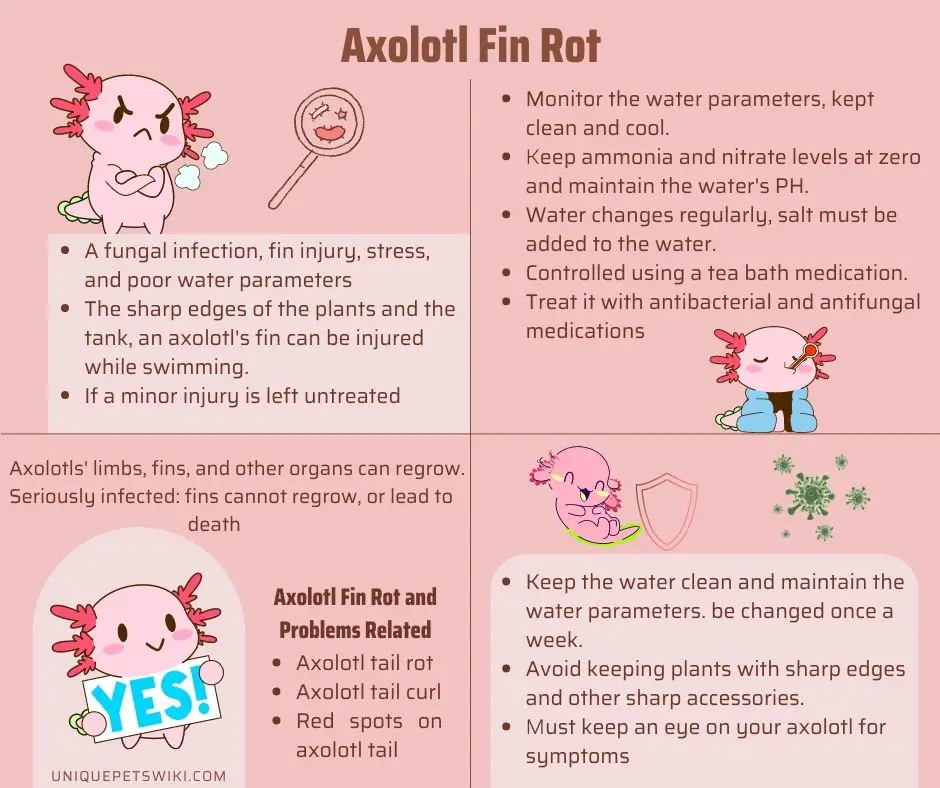
Fin Rot Cause
The most prevalent cause of axolotl fin rot is a fungus. The cotton-like growths on the axolotl’s body are an indication.
The infection worsens over time, causing axolotl fin rot. The ailment must be treated since it causes the axolotl to become lethargic, anxious, and less eager to feed.
Because stress inhibits and weakens the immune system of axolotls, it can cause the fin to rot. Axolotls require enough space in the tank to swim freely; when they are overcrowded, they become stressed.
In axolotls, a rise in nitrogen and nitrite levels can also cause stress and fin rot. In a healthy axolotl, inadequate water parameters do not induce fin rot directly, but they can be secondary causes.
Because of the sharp edges of the plants and the tank, an axolotl’s fin can be injured while swimming.
If a minor injury is left untreated, bacteria will spread to the wounded area and cause infection. Due to severe infection and inflammation generated by ammonia and nitrite on the wound, the axolotl fin gets damaged.
Fin Rot Treatment
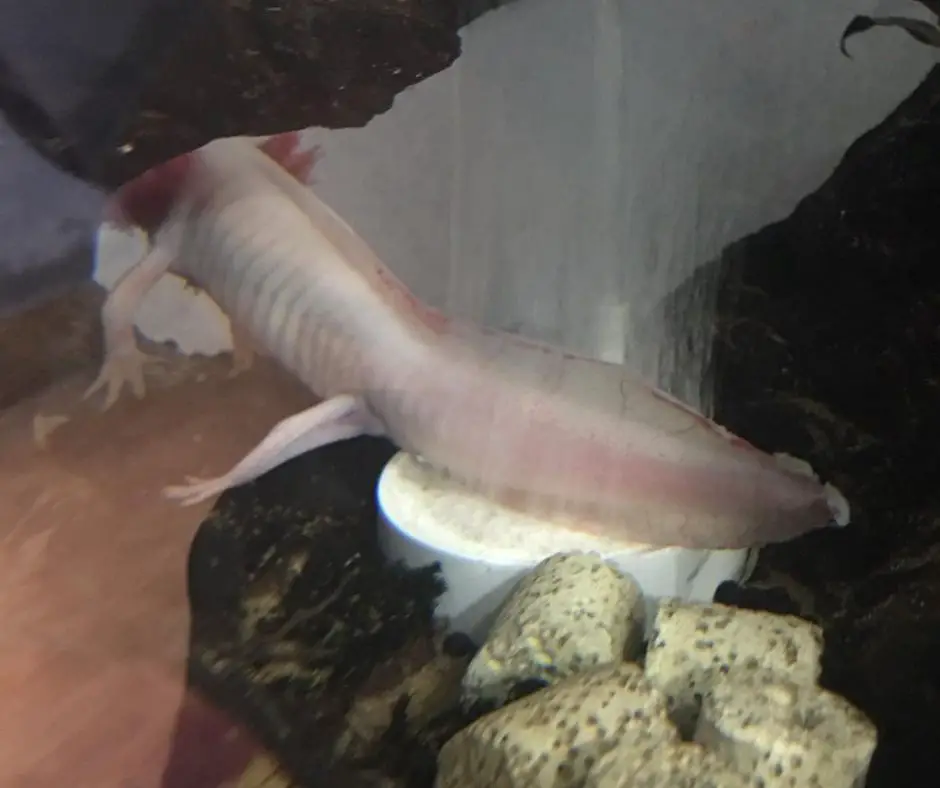
It is critical to evaluate and monitor the water parameters to treat axolotl fin rot. The water should be always kept clean and cool. This supports the axolotl’s immune system in its fight against infection.
If an axolotl fin is injured, keep the water temperature low to aid wound healing.
It’s also important to keep ammonia and nitrate levels at zero and maintain the water’s PH. Water changes regularly keep water parameters stable and prevent the growth of fungus and bacteria.
To treat fin rot, salt must be added to the water. Pathogens cannot grow in the presence of salt.
If the axolotl’s illness is serious, you can treat it with antibacterial and antifungal medications after consulting with a veterinarian.
Do Axolotls Fins Grow Back?
Axolotls’ limbs, fins, and other organs can regrow. On the other hand, fins cannot regrow if they are seriously infected, and can even lead to death. Because the infection spreads to inside organs, it disrupts the regeneration process.
Whether the infection is bacterial or fungal, it inhibits the regeneration process if it becomes chronic. Because the infections impede cell division and blastema formation at the site.
As a result, cartilaginous cells and tissues do not deposit for the regeneration of missing organs.
How to Prevent Axolotl Fin Rot?
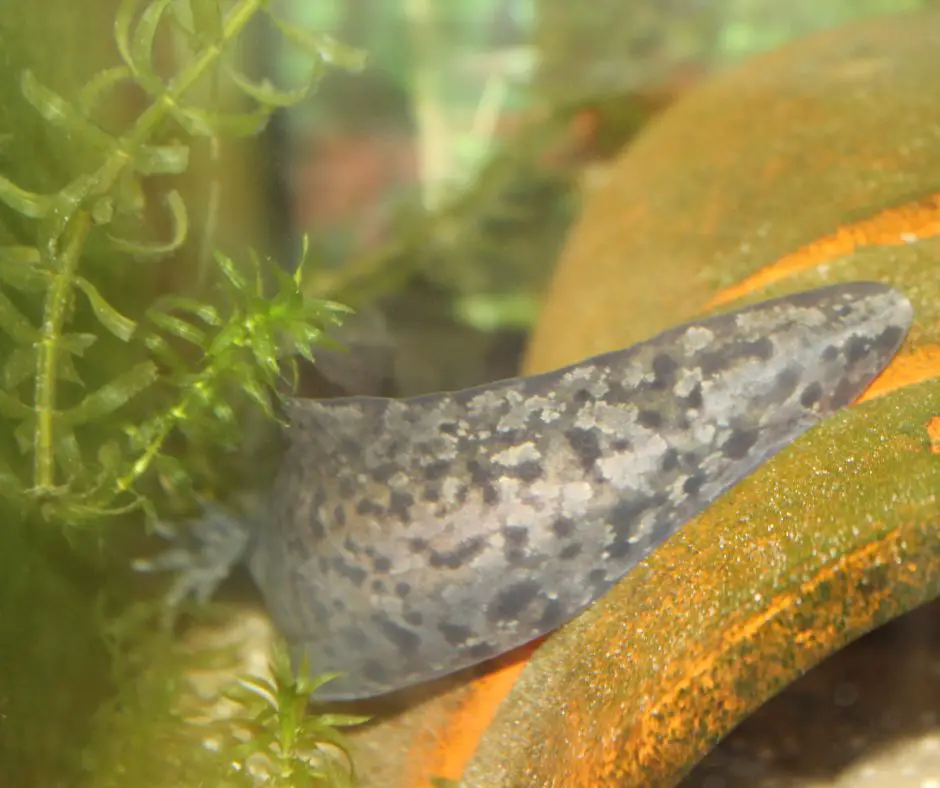
The best way to prevent axolotl fin rot is to keep the water clean and maintain the water parameters. Check the PH, nitrogen levels, nitrates, levels, and water temperature by doing water testing.
Sharp edges of plants and tanks may cause fin injury in axolotls. As a result, avoid keeping plants with sharp edges and other sharp accessories.
Because food residues, excrement, and other impurities can pollute the tank water, it should be changed once a week.
You must keep an eye on your axolotl for symptoms of infection and stress. The majority of axolotl health problems are caused by stress. Consult a veterinarian if you notice any indications or symptoms of a fin infection.
API Test Strips
- Contains one (1) API 5-IN-1 TEST STRIPS Freshwater and Saltwater Aquarium Test Strips 25-Count Box
- Monitors levels of pH, nitrite, nitrate carbonate and general water hardness in freshwater and saltwater aquariums
- Dip test strips into aquarium water and check colors for fast and accurate results
- Helps prevent invisible water problems that can be harmful to fish and cause fish loss
- Use for weekly monitoring and when water or fish problems appear
Last update on 2022-12-30 / Affiliate links / Images from Amazon Product Advertising API
Axolotl Fin Rot and Problems Related
- Axolotl Tail Rot
Bacterial and fungal diseases cause axolotl tail rot. The presence of pollutants in the tank encourages bacteria and fungus to flourish.
When an axolotl’s tail becomes infected, it begins to scratch and rubs it. Maintain water parameters, lower the temperature, and change the water regularly to avoid this problem.
Stress causes the tail curl in axolotls. Changes in water parameters and tank hygiene cause stress in axolotls. The PH, nitrogen levels, nitrate levels, pollutants, injuries, and nitrogen cycle must be checked.
If you see any changes in the water chemistry, make the necessary modifications to keep the axolotls stress-free.
Bacteria and high ammonia levels in the water cause red spots on the axolotl’s tail. When the tail becomes affected, the axolotl scratches it, causing red spots to appear.
If not treated promptly, an axolotl might become lethargic and anemic. As a result, see a veterinarian for an antibiotic prescription.
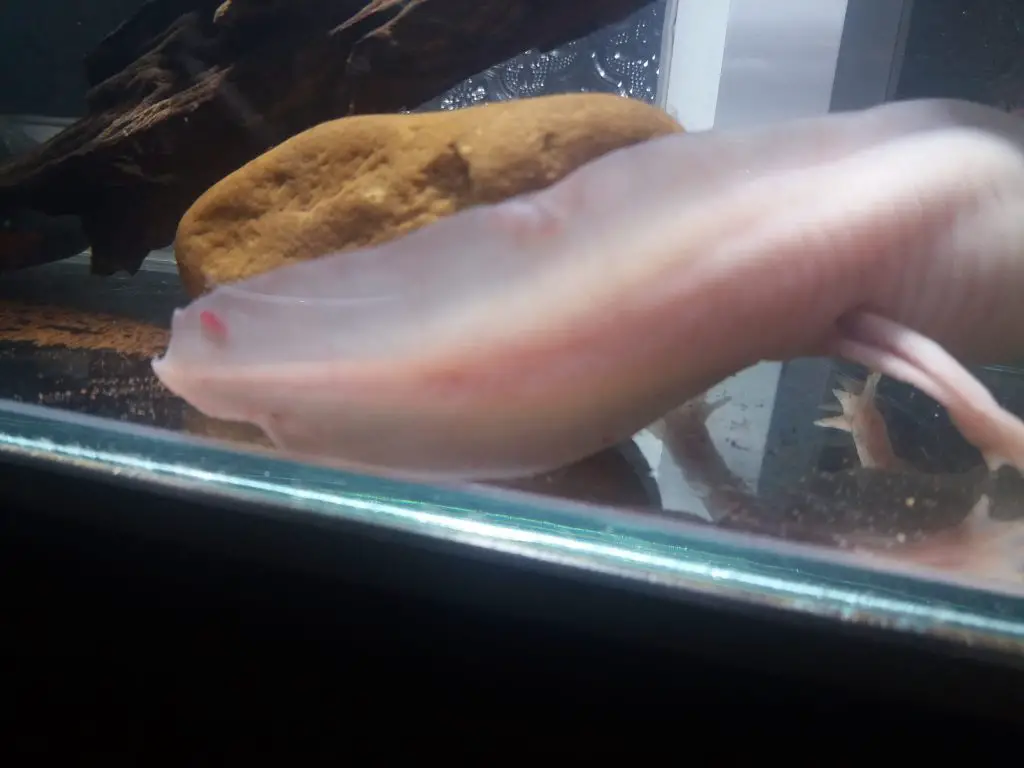
FAQs
How do you treat axolotl fungus?
Antifungal medications can be used to treat axolotl fungus. Fungus growth happens when the tank water is contaminated with excrement, food residues, and other impurities. Fungi are confirmed by white cotton-like growths on the axolotl’s body and in the tank.
How do you treat axolotl bacterial infection?
Antibiotics are used to treat bacterial infections in axolotls. Any antibiotic should be used only after consulting with a veterinarian.
A vet prescribes narrow-spectrum or broad-spectrum antibiotics according to the axolotl’s condition. However, gentamicin and enrofloxacin are used to treat bacterial infections in axolotls.
How do you treat Saprolegnia in axolotls?
Antifungal treatments, such as water mixed with salt, can be used to treat Saprolegnia. Put a teaspoon of salt in 2 liters of water to treat Saprolegnia. This combination will keep fungus and Saprolegnia from growing in the tank.
Do axolotls feel pain?
Axolotls, like other salamanders, feel pain. On the other hand, their pain sensors are not as sophisticated as humans’.
Pain is a complex state of the brain that cannot be detected in animals. However, you can tell by the animal’s physical and emotional reactions.
Can axolotls heal themselves?
To heal themselves, axolotls can regenerate their organs, including gills, limbs, and other organs. They can regrow any organ that has been lost due to damage.
However, severe bacterial and fungal infections can sometimes prevent diseased organs from regenerating. The axolotl’s lost leg takes more than a month to regrow.
Conclusion
Axolotl fin rot can be caused by many factors such as stress, poor water chemistry, overcrowding in the tank, injury, and bacterial or fungal infections.
Due to low water quality, Pseudomonas bacteria develop in the water and infect the fins. When an infection becomes chronic, the fin begins to rot.
To treat axolotl fin rot, it’s important to keep the water quality and conditions in check. To prevent the growth of fungi, add salt to the water.
Keep the water cold since it aids in the fin regeneration process. Axolotls can regenerate their fins, but a severe infection can hinder the process.
As a result, it is preferable to prevent the problem by taking preventative measures. Change the tank water once a week and test the water regularly to achieve this.
